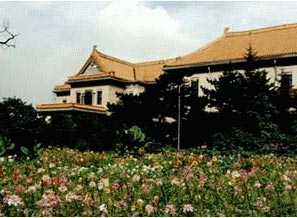 |
The Puppet Manchurian Imperial Palace Museum was rebuilt on the former Puppet Manchurian Imperial Palace (PMIP) in 1982 and opened to the public in 1984. Located at No.5 Guangfu North Road in the northeast corner of Changchun City, it covers an area of 120,000 square meters.
The palace for Puppet Emperor of Puppet Manchurian Regime supported by Japanese Imperialism from 1932 (the year after the Sept.18th Incident) to 1945 witnessed Japan's invasion of Northeast China.
The Puppet Imperial Palace comprises three groups of buildings: The central line consists of Jixi Building, Qinmin Building and Huaiyuan Building -- Jixi Building was the bedchamber for emperor and his empress and concubines, Qinmin Building, the great hall for handling affairs of state, and Huaiyuan Building for worship ancestors and Buddha; the east line, Tongdedian (Hall of Sharing One Common Goal), Imperial Garden, natatorium and an air raid basement specially built for Puyi -- the puppet emperor, etc.; and the west line, hippodrome and firehouses, etc. It is surrounded by black palace walls with 12 casemates.
At present, a collection of 9,185 cultural relics are on show in the Museum. For instance, the precious carpet of the Jingren Palace taken out from the Forbidden City by Puyi, a piece of white bear skin used when Puyi met those foreign diplomats, and many governmental statements signed by Puyi, etc.
The Museum has held many exhibitions to display the historical testimony of the Japanese imperialism's invasion to Northeast China, including From the Emperor to a Citizen, Documents on Japanese Imperialism's Invasion and Display of Puppet Imperial Palace Relics, etc. In addition, the Museum has compiled theYearbook of the Puppet Imperial Museum.